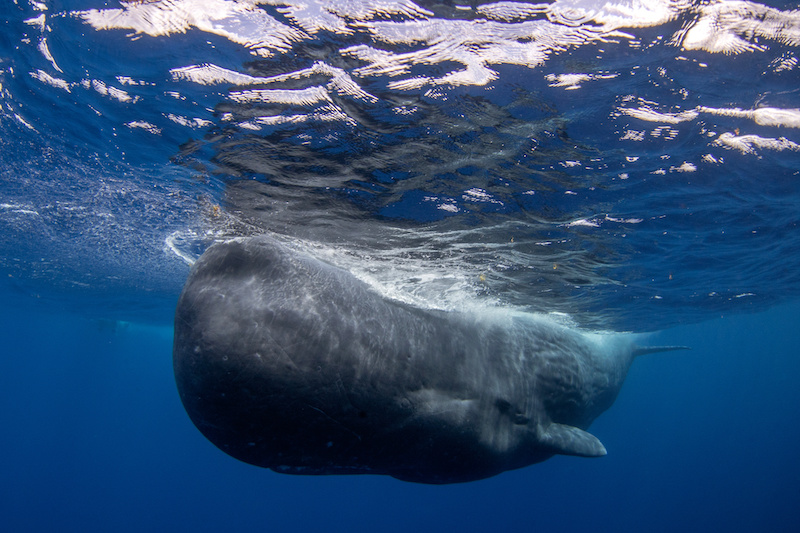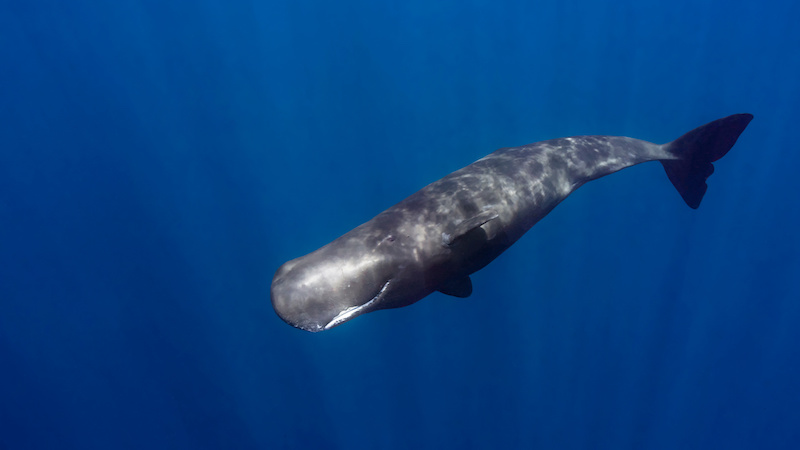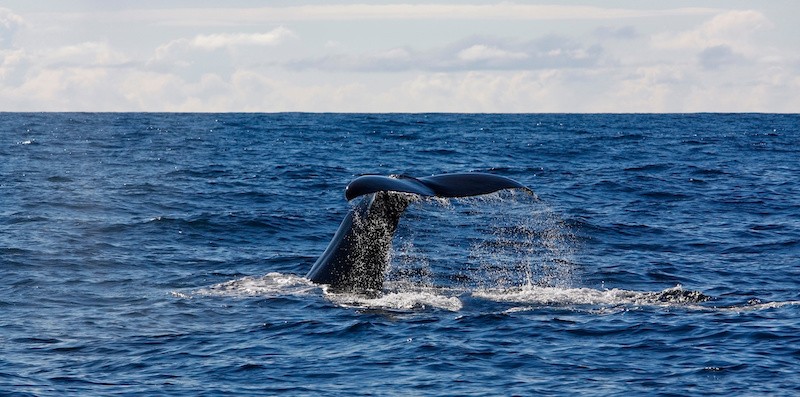
The Sperm Whale, scientifically known as Physeter macrocephalus, is a fascinating marine mammal and the largest toothed predator in existence. In this article, we explore the unique characteristics of this species, its natural habitat, reproductive habits, and dietary preferences. Discover the secrets of this ocean giant and its crucial role in the marine ecosystem.
Characteristics of the Sperm Whale
The Sperm Whale (Physeter macrocephalus) is an impressive marine mammal, known to be the largest toothed predator in the world. These giants of the sea can reach lengths of up to 20 meters for males, while females are generally smaller. Males can weigh up to 57 tons, demonstrating marked sexual dimorphism. The massive head of the Sperm Whale, representing about one-third of its total body length, is one of its most distinctive features. This head houses the spermaceti organ, a unique structure used for echolocation and buoyancy.
Their skin is typically dark gray to black, with a wrinkled texture. They lack a typical dorsal fin, instead having a series of humps leading to the tail. Their blow, projected at a characteristic angle, is another distinctive trait. These mammals have remarkable longevity, with a lifespan of up to 70 years.
The Sperm Whale is also known for its deep dives, reaching depths of 2,000 meters, and for its powerful vocalizations, the loudest produced by any animal. These features, combined with their imposing size and specialized dietary habits, make the Sperm Whale a fascinating and crucial player in the marine ecosystem.

Habitat of the Sperm Whale
The Sperm Whale (Physeter macrocephalus) inhabits oceans worldwide, demonstrating incredible adaptability to various marine environments. These marine mammals prefer great depths, often diving kilometers below the surface to feed. Their habitat spans from equatorial and tropical waters to colder regions, with notable differences between sexes.
Females and young Sperm Whales typically stay in warm waters, while adult males often explore colder waters and may venture into polar regions. However, they return to warmer waters for reproduction. Their ability to navigate through such a variety of oceanic conditions, from shallow waters to abyssal depths, underscores their important ecological role as predators and indicators of marine ecosystem health.
Reproduction in the Sperm Whale
The reproduction of the Sperm Whale (Physeter macrocephalus) is a fascinating process, reflecting the complexity of this marine species. Males reach sexual maturity around the age of 20, while females typically mature around 7 years. Gestation in females lasts approximately 15 months, a relatively long period compared to other marine mammals.
After this time, the female gives birth to a single calf, which occurs every 3 to 6 years. This low reproductive rate underscores the importance of the extended parental care that the mother provides to her young. Sperm Whale calves stay with their mother for several years, learning the skills necessary for survival in the ocean. This period of learning and development is crucial for the socialization of the young Sperm Whale and its integration into the complex social structure of these marine mammals.

Diet of the Sperm Whale (Physeter macrocephalus)
The diet of the Sperm Whale (Physeter macrocephalus) is highly specialized and adapted to its oceanic environment. These sea giants are formidable predators of cephalopods, with a preference for giant squids, including the colossal squid. They are known to dive to abyssal depths, sometimes up to 2,000 meters, in search of prey. There, in the darkness of the depths, they hunt these enigmatic marine creatures using echolocation.
Their diet primarily consists of squids, although other cephalopods and fish may also be part of their menu. Sperm Whales are skilled hunters, using their large conical teeth to catch their prey. Their dietary preference for giant squids makes them formidable competitors for these creatures, and their role as predators in the deep sea is crucial for regulating cephalopod populations. This dietary specialization has contributed to shaping the evolution of the Sperm Whale over millions of years, making it one of the most adapted predators of the deep ocean.
Discover all the cetacean species that can be found near the coasts of Martinique: